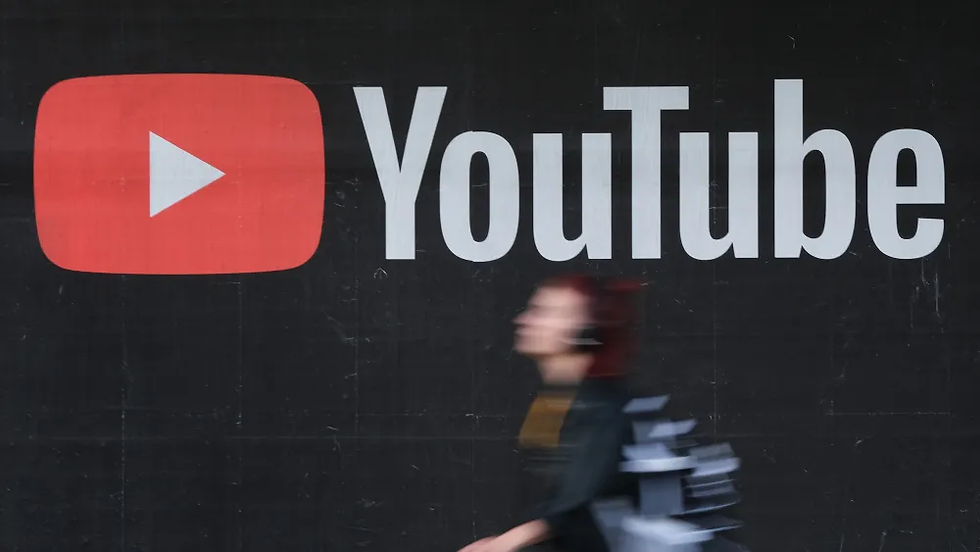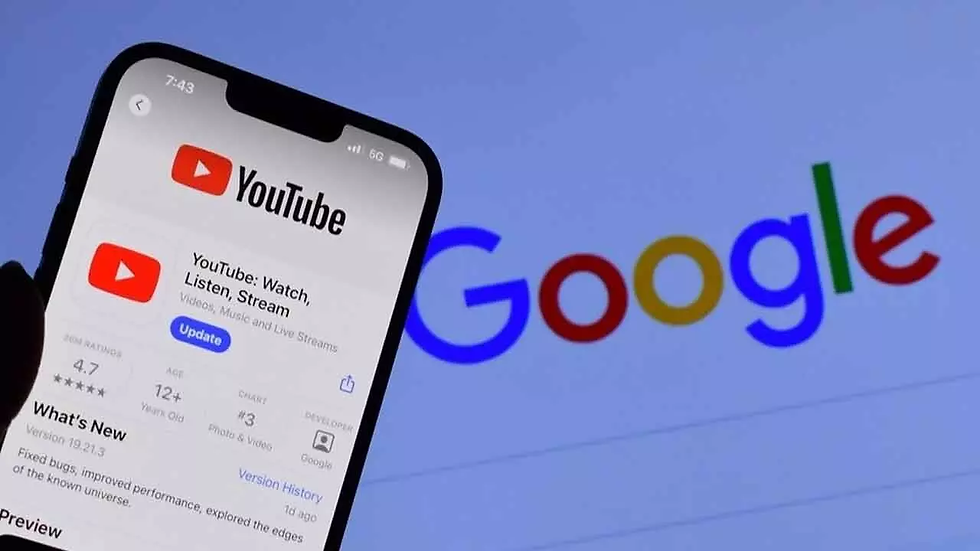YouTube AI Age Restriction Update: Stricter Screening for Mature Content in 2025
- Aisha Washington

- Aug 23
- 16 min read
YouTube AI age verification is the headline tool YouTube announced in 2025 to better gate mature content and tailor experiences for younger viewers. The company frames the change as a move to ensure people see age-appropriate content and to offer extra protections for teens by using automated signals and optional verification steps to confirm a user’s age before granting access to certain features or videos. Official messaging stresses that the system aims to reduce underage exposure to mature material, limit monetization and recommendation of age-sensitive content to teens, and make compliance with emerging laws easier.
Why this matters: for users it changes how and when they’re asked to prove age; for creators it could alter reach, monetization, and the risk of automatic age gating; and for regulators it represents a major platform-level attempt to meet new legal expectations around age assurance. The announcement — framed around building “age-appropriate experiences” — also explicitly links the rollout to external regulatory pressure and evolving industry norms for digital identity.
What YouTube is rolling out, YouTube AI age verification system explained

YouTube defines YouTube AI age verification as a combination of automated, privacy-minded signals and optional user-supplied verification that together establish whether a viewer is above or below certain age thresholds. In plain terms, YouTube will use algorithmic classifiers to infer likely age ranges, require direct verification for some actions or content, and add explicit age gates to features like live chat, comments, creator monetization eligibility, and access to mature-rated videos. The company describes this as a layered approach: lightweight estimation for low-risk surfacing, stronger verification (including document checks or third-party verification) for higher-risk features.
Key elements of the system design and scope:
Age-gated content: Videos flagged as mature or otherwise sensitive will be restricted behind verification steps. Creators can also be prompted to declare target audiences and mark their content appropriately.
Feature restrictions: Certain platform features — e.g., uploading age-sensitive ads, participating in live streams with unmoderated chat, or accessing short-form features aimed at adults — may require verified status.
Multi-tier verification: YouTube intends to use a mix of signals (self-declared profile age, behavioral signals, device/account history, and third-party or document checks where required) to reduce friction while aiming for reliability.
Differentiated UX: Verified accounts should see fewer verification prompts and access features immediately; unverified accounts face progressive gating and occasional reminders.
YouTube frames the system as an extension of its safety goals for teens: to reduce exposure to inappropriate content, limit targeted advertising when not appropriate, and give families clearer controls. This aligns with earlier moves to default more protective settings for younger users and to expand built-in protections; YouTube’s blogspot about extending protections to teens explains the intent to tune content recommendations and defaults to safer options for under-18 audiences. See YouTube’s description of built-in protections for context and the 2025 announcement for technical framing. YouTube built-in protections for teens, YouTube AI age verification system 2025 announcement.
Age-appropriate experiences are the stated outcome: targeted recommendations, fewer engagement prompts around adult topics, and stricter controls on content with sexual, violent, or tobacco/alcohol themes. The company contends that smarter age classification reduces accidental exposures and helps creators indicate intent more accurately, though it admits imperfect detection is possible.
What this means for users and creators:
Users: expect intermittent prompts asking for age confirmation; partial access to some features until verified; and possible privacy tradeoffs if opting into stronger verification.
Creators: may see automatic age gates on uploads flagged by classifiers; changes to how monetization and ads are applied; and new labeling responsibilities.
Practical action: creators should review their channel metadata, update audience declarations, and monitor policy dashboards to catch any sudden age-gating or distribution changes early.
Technical explanations and industry response are still evolving; initial coverage and YouTube’s FAQs attempt to strike a balance between safety and privacy. For broader analysis and reported reactions, industry outlets have covered how YouTube aims to treat teens differently and why regulators are pressing platforms to do more.
How the AI age verification process will work in practice
YouTube’s public materials describe a staged verification flow:
Passive inference: The system initially uses low-friction signals (account creation date, language, viewing patterns, device metadata) to infer a likely age band. These heuristics are used primarily to reduce obvious misclassification without asking for more data.
Soft prompt: When a user attempts to view age-sensitive content, the platform can display a prompt asking for confirmation of age. If the user provides a self-declared age that aligns with the inferred range, access is granted; otherwise, the system may escalate.
Verification step: For features requiring higher assurance (e.g., certain monetization, direct communications, or explicit content), YouTube may require stronger checks — this could mean uploading ID documents through a secure flow or using third-party identity providers. YouTube emphasizes choices that minimize storing sensitive documents where possible.
Ongoing signals: Behavioral patterns and cross-product signals (e.g., Google account age signals) are used to maintain age labels over time, with periodic re-checks or triggers for re-verification.
In-app UX: verified users will see fewer prompts, and their experience should be largely unchanged except for access to features requiring adult status. Unverified users will face more gating, occasional content blurring, or outright blocks on some videos.
Expected friction: YouTube aims to minimize disruption by defaulting to gentle prompts and relying on low-risk inferences. However, creators and users should anticipate intermittent UX interruptions and a new mental model where age matters across more features. This approach attempts to balance user convenience with regulatory compliance. Early readouts suggest the company will favor step-up verification only when necessary, but that the bar for “necessary” will be determined both by internal policy and external regulations.
Which content and user groups are affected
Most impacted content and groups:
Mature content categories: videos containing explicit sexual content, graphic violence, drug or alcohol use, and certain health or self-harm material will be prioritized for age gating.
Monetization-sensitive material: ads targeted at adults, sponsorships involving adult products, or content flagged for limited ad suitability will be more tightly controlled.
Teen-targeted features: social features accessible by minors (live chat, direct messaging, certain creator monetization features) may be restricted or require parental verification.
Creators with broad audience mixes: channels with mixed-age viewership are particularly vulnerable to misapplied gates, which can affect discoverability and revenue.
Geographic and regulatory rollout: YouTube has indicated it will prioritize markets with active legislative pressure or clear legal frameworks for child safety — for example, the UK (with the Online Safety Act) and the EU — while adjusting to local data protection rules. That means users in some regions may see stricter enforcement earlier and different verification options depending on local privacy and ID verification regulations. See YouTube’s blog and regional coverage for the rollout mapping. YouTube AI age verification system 2025 announcement, Windows Central analysis of regional concerns.
Concrete insight: creators should track regional analytics to spot early gating patterns and preemptively update video metadata and audience declarations.
Regulatory drivers for YouTube AI age verification, including the UK Online Safety Act

YouTube’s deployment of AI age verification is not just a product choice — it’s a compliance move shaped by rising regulatory demands. Platforms now face laws and guidelines that require age assurance and proactive measures to prevent minors’ exposure to harmful content. YouTube explicitly cites regulatory motivations in its communications and positions the system as a way to meet both legal obligations and public expectations.
A primary driver is the UK’s Online Safety Act. The law requires online services to take reasonable steps to prevent child exposure to harmful content and imposes duties on platforms to demonstrate they have effective safeguards in place. The Act pushes companies to implement age assurance mechanisms that can show whether users are children or adults for the purpose of applying different content policies. YouTube’s emphasis on stronger verification for specific features and content can be read as a response to these obligations. For a deeper look at how platforms are responding in the UK context, see industry analysis summarizing the Online Safety Act and its implications.
Beyond the UK, regulatory trends in the EU and some U.S. state laws similarly push for better age assurance. Regulators want platforms to be able to demonstrate not only policies but the effectiveness of their enforcement. That means platforms face possible penalties if they cannot show they took reasonable steps to verify ages where the law expects them to. As a result, YouTube’s layered approach — combining inference and explicit verification — is an attempt to square the legal need for reliable age checks with user privacy constraints. See broader commentary on how compliance pressures shape age-verification decisions.
Key regulatory insight: lawmakers increasingly favor demonstrable controls over passive policies; platforms are responding with verifiable, auditable mechanisms.
The UK Online Safety Act and similar frameworks
The Online Safety Act includes provisions that:
Require platforms to mitigate systemic risks to children by enforcing age-appropriate safety measures.
Mandate risk assessments and evidence that steps taken are proportionate and effective.
Establish enforcement regimes that can levy fines or require remediation for noncompliance.
Other jurisdictions are adopting parallel frameworks or guidance that emphasize age assurance, transparency, and auditability. The differences in consent, data protection rules (notably GDPR in the EU), and permitted verification methods mean YouTube must tailor approaches by country. For example, what’s permissible for verification in the UK might be restricted under stricter EU data minimization rules, requiring different technical or contractual arrangements with third-party verifiers. Regulatory analyses highlight these trade-offs and explain why a multi-pronged approach is necessary.
Global policy trends shaping platform responses
Industry-wide trends include a move toward some form of digital identity or age credentialing to manage access, paired with calls for privacy-preserving techniques (e.g., zero-knowledge proofs or third-party attestations that confirm age without revealing identity details). Platforms are also increasingly expected to publish enforcement statistics and to allow for independent audits of their moderation systems. These trends encourage companies like YouTube to invest in both technological solutions and governance structures that can be inspected by regulators and researchers. See analysis of how platforms are balancing regulatory requirements and privacy considerations.
Actionable recommendation for policymakers: require standardized audit trails and privacy-preserving verification methods to reduce incentives for invasive identity collection while ensuring compliance.
Privacy and data protection concerns about YouTube AI age verification

Privacy is the most visible friction point in reactions to the rollout. Terms like YouTube AI age verification privacy and age verification data have populated headlines because the system could touch sensitive identifiers and behavioral patterns. Privacy worries focus on what is collected, how long it’s stored, whether biometric or identity documents are retained, and how inferences (age estimates) might be reused for advertising or other profiling.
Major concerns include:
Scope of data collected: beyond simple self-declaration, the system may use device metadata, cross-account signals, and potentially biometric inference from profile photos or video thumbnails to estimate age.
Retention and reuse: will inferred ages or verification attachments be retained long-term, and could they be repurposed for ad targeting or sold to partners?
Security of verified documents: where document uploads are used for high-assurance checks, can users trust that sensitive documents are handled securely and deleted when no longer needed?
These issues directly affect trust: users who fear intrusive verification may avoid the platform, reduce activity, or refuse to provide verification — which could increase friction and churn. Commentators and privacy experts caution that even well-intentioned systems can lead to function creep, where age data is repurposed over time. Reporting on these privacy trade-offs has been prominent; see Kiplinger’s coverage on privacy concerns and Ecommerce North America’s analysis of potential ecommerce implications tied to verification.
Privacy takeaway: without clear retention limits, deletion policies, and transparency, age verification can undermine the trust it intends to create.
Types of data and verification signals under debate
Likely inputs and their privacy risk:
Self-declared age: low risk but easy to falsify; often the first step in the flow.
Document upload (ID): high assurance but high privacy and security risk if stored improperly.
Biometric inference: deriving age from face images or voice leads to heightened privacy concerns and raises issues around biometric data protection and discrimination.
Behavioral signals: viewing habits, search history, and interaction patterns can be used to infer age with varying confidence; these signals are less intrusive to collect but can create opaque profiling.
Third-party attestations: age verification provided by an external provider — potentially privacy-preserving if designed correctly — but it introduces trust in the verifier’s practices.
Explicit verification (IDs, attestations) provides higher assurance and clearer legal defensibility but increases privacy exposure and requires robust processing safeguards.
AI-inferred age reduces user friction and document handling but is more error-prone and less transparent, increasing risks of unfair classification and hidden profiling.
Public reaction and expert commentary on privacy
Public reaction has been mixed: some parents and regulators welcome stronger age gates; privacy advocates and many users are skeptical. Media coverage has spotlighted concerns about how verification data could be used beyond safety goals, including targeted advertising and cross-platform profiling. Experts urge clear safeguards: minimize sensitive data collection, implement short retention windows, provide granular user controls, and permit independent audits.
Kiplinger and other outlets note that perception often matters as much as policy: platforms must communicate clearly about what is collected and why, and they must make it simple for users to understand and manage their verification data. Without that clarity, platforms risk both reputational damage and regulatory scrutiny.
Actionable privacy steps for YouTube:
Publish clear retention and deletion policies for verification data.
Use privacy-preserving verification where possible (attestations, minimal disclosure).
Offer transparent user controls and meaningful explanations at point-of-collection.
Impact on creators and content accessibility, risk of false policy strikes

YouTube age restriction changes have immediate implications for creators. The risk of false policy strikes — where automated systems mislabel content as age-restricted or policy-violating — is a major concern. False restrictions can reduce discoverability, limit ad eligibility, and lead to demonetization, even if later reversed on appeal. Creators fear automated gates will be overused or applied asymmetrically, disproportionately affecting smaller channels that lack resources to navigate appeals.
Mistaken age tags: videos may be auto-labeled as mature when context or intent is benign.
Distribution impacts: age-gated content is deprioritized in recommendations and search, reducing organic reach.
Revenue hits: restricted videos often receive fewer ads or ads at a lower CPM and can lose sponsorship opportunities.
Appeals friction: if review pathways are slow or opaque, creators suffer interim losses.
Initial reporting highlights early complaints and examples of misapplied restrictions; these stories underline the human cost of automated moderation.
Creator takeaway: prepare for sudden distribution changes and build an appeals playbook to minimize revenue disruption.
Examples and early reports of false policy strikes
Documented early cases include:
Creators reporting that benign educational videos (e.g., historical footage or health videos) were age-restricted due to visual content flags.
Small channels experiencing significant drops in watch time after sudden gating, with appeals taking days to resolve.
Discrepancies between automated decisions and human reviewers that lead to inconsistent enforcement.
These accounts suggest typical failure modes: over-sensitive classifiers, lack of contextual understanding, and delays in escalation to human review. The most effective creator strategies will be proactive: keeping clear metadata, marking videos with contextual notes, and using YouTube’s policy dashboards to flag sudden impacts quickly.
Appeals and review: YouTube signals it will rely on human review for contested cases and provide creators with a pathway to challenge age gates or strikes. But creators should expect some lag and should document their communications, keep backups of content explanations, and signal educational or contextual intent through visible metadata and pinned descriptions.
Accessibility and audience reach implications
Misclassification does more than cut revenue: it biases what audiences see. Age-restricted videos are less likely to be surfaced to new viewers and may not be recommended to younger but eligible users. Over time, this can push creators to self-censor, avoid certain topics, or over-flag content to prevent harsher penalties. That conservatism can shrink content diversity and reduce educational or responsible adult discussions on sensitive topics.
Actionable guidance for creators:
Review recent analytics for sudden drops in traffic that coincide with policy changes.
Update video descriptions and metadata to clarify intent, and use content listings (e.g., timestamps) to give reviewers context.
Maintain a template for appeals that highlights educational intent, lack of explicit content, and compliance with community guidelines.
For platform designers: invest in fast, transparent appeal processes and human-in-the-loop moderation to limit undue harm. Independent audits and creator-facing tooling can help restore trust and reduce the incidence of false policy strikes.
AI moderation accuracy, fairness, and robustness concerns for YouTube age classifiers

Automated age classification raises familiar challenges from the AI moderation literature: bias across demographic groups, vulnerability to adversarial inputs, and difficulty generalizing across contexts. Research shows that classifiers trained on imbalanced datasets often misestimate attributes like age for marginalized groups, and that small changes in input (lighting, camera angle, image quality) can drastically change predictions. These failure modes are not hypothetical — they translate into real harms when used to gate access or impose penalties.
Scholarly work on moderation robustness highlights issues directly relevant to YouTube’s rollout. Studies demonstrate that models can inherit societal biases from training data and perform worse on underrepresented cohorts, leading to unfair outcomes. Ongoing monitoring, transparency about datasets, and independent auditing are key to addressing these risks. See recent academic findings on AI moderation robustness and related safety moderation research.
Research insight: fairness failures in age classifiers can systematically disadvantage specific demographic groups and require continual, well-documented mitigation.
Known model failure modes and bias risks
Specific failure modes to watch:
Demographic bias: models may overestimate age for older-looking minorities or underestimate for certain age-presenting traits, depending on training composition.
Edge cases: non-binary gender expression, cultural dress, or makeup may skew results when models rely on stereotyped visual cues.
Adversarial inputs: deliberate manipulations (filters, metadata spoofing) can deceive a classifier, enabling misrepresentation or circumvention.
Distribution shifts: real-world deployment often sees different input distributions than the training data (e.g., varying camera quality globally), reducing accuracy.
Consequences: when these errors lead to age gating or content removal, the harms are tangible — lost income for creators, denied access for users, and, potentially, discriminatory effects across demographic groups.
Research-informed mitigation strategies
Academic and applied research suggests several promising strategies:
Diverse training datasets: curate and publish dataset composition to reduce blind spots and allow external scrutiny.
Adversarial testing: stress-test models with manipulated inputs, edge cases, and diverse contexts to identify brittle behaviors.
Human-in-the-loop review: use automated classifiers to triage rather than decide; ensure fast escalation paths for contested classifications.
Continuous auditing: perform periodic fairness audits with third-party evaluators and publish summary metrics.
Privacy-preserving techniques: apply on-device inference or minimal disclosure protocols where possible, reducing data exposure while maintaining functionality.
Actionable design checklist for platform engineers: 1. Publish summary stats on dataset coverage and fairness testing. 2. Implement fallback human review for high-impact decisions like account suspensions or monetization changes. 3. Maintain rapid appeal channels with explicit SLAs to reduce interim harms. 4. Use differential privacy or secure attestation where identity proofing is required.
Market impact, user engagement risks, and practical solutions for YouTube AI age verification

Stricter verification can introduce engagement friction that affects watch time, ad impressions, and subscription behaviors. Market analyses indicate that any additional prompts or barriers — even short ones — reduce conversion rates for sign-ups and content consumption. eMarketer and similar sources warn that friction around identity or age checks can lead to measurable drops in engagement, especially among casual users who are less willing to complete multi-step verification flows.
Reduced watch time and ad revenue from gated content.
Shifts in user loyalty: some users may switch platforms to avoid verification or seek less intrusive alternatives.
Creator churn: creators who lose revenue or discoverability may migrate or adjust content strategies, reducing platform diversity.
Business insight: small UX frictions can scale to big revenue effects; companies must quantify the trade-off between safety gains and engagement loss.
Evidence of engagement risk and strategic tradeoffs
Quantitative studies suggest the user drop-off rate increases with each additional verification prompt. Even when verification is framed as a safety measure, friction matters: conversion funnels are sensitive to perceived complexity and privacy concerns. eMarketer’s analysis projects potential declines in session length and ad impressions if verification becomes frequent or invasive. The strategic tradeoff is clear: stricter controls reduce exposure risk but may push users and creators away, especially where competitors offer less stringent alternatives.
Recommended platform responses and product design fixes
To reduce friction and maintain engagement while meeting safety goals, platforms should adopt a layered, user-centered approach. Practical suggestions for YouTube and similar services:
Minimize prompts: rely on lightweight estimation for low-risk content and reserve high-assurance checks for the smallest set of genuinely high-risk actions.
Clear privacy communication: at the point of any verification request, present concise, plain-language explanations of what’s collected, why, and how long it’s retained.
Offer privacy-preserving options: third-party attestations or cryptographic proofs that confirm age without revealing identity details.
Phased rollouts and opt-ins: pilot in limited markets and solicit user feedback; allow opt-in trials for creators and producers to adapt.
Robust appeals and SLAs: ensure creators have rapid human review pathways and transparent outcomes to avoid prolonged revenue loss.
Creator support and analytics: provide tools to detect when age gating affects reach and to help creators correct metadata or contest decisions.
Concrete product-design pattern: use progressive profiling — collect minimal information first, then request additional verification only when required for specific features. This reduces unnecessary data capture and preserves user trust.
Resources and industry guides on navigating these changes stress that transparent policy and simple UX are effective mitigations.
Frequently Asked Questions about YouTube AI age restriction and verification
What is changing in 2025 for YouTube age verification and who it affects?
Short answer: YouTube AI age verification introduces automated age estimation and step-up verification flows to restrict access to mature content and features; it affects viewers (especially teens and unverified accounts), creators with age-sensitive content, and advertisers who target adult audiences. The goal is safer, age-appropriate experiences while complying with new legal obligations.
What data does YouTube collect for AI age verification?
Short answer: likely signals include self-declared age, account and device metadata, behavioral patterns, and — for high-assurance checks — document uploads or third-party attestations. There’s debate about whether biometric inference (e.g., image-based age estimation) will be used and how long any verification data will be retained. Users should review privacy settings and any explanations at point-of-collection.
Can creators contest false age restrictions or strikes?
Short answer: yes — YouTube says creators will have appeals and human review options, though the speed and effectiveness of those reviews will determine how damaging false classifications are. Creators should prepare documentation and appeal templates to accelerate reviews. Coverage of creator experiences highlights the need for fast, transparent appeals. DTP Tips on false policy strikes.
Will this make YouTube safer for teens?
Short answer: it can reduce accidental exposures and limit adult-targeted advertising to minors when implemented carefully, but safety gains depend on accuracy and deployment choices. Age verification reduces some risks but cannot eliminate all harms, and privacy trade-offs can create new problems. Balancing protection with minimal intrusion is essential; see commentary on Online Safety Act-driven changes and platform protections for teens. YouTube built-in protections for teens.
How might this affect content discovery and monetization?
Short answer: age-restricted content is typically deprioritized in recommendations and may qualify for limited ads, reducing reach and revenue. Misclassification increases the risk of demonetization and distribution loss, so creators should expect changes in audience metrics and plan appeals if needed.
What steps can users take to protect their privacy while complying?
Short answer: read and act on in-app explanations before sharing IDs, use privacy-preserving verification options if offered (third-party attestations), limit document uploads wherever possible, and regularly check account privacy settings and retention disclosures. If uncomfortable, users can seek limited verification options or contact support for alternatives. For broader privacy guidance, consult recent reporting summarizing verification risks. Ecommerce North America on privacy impacts.
Conclusion, actionable insights and future outlook for YouTube AI age verification

YouTube’s 2025 age-verification update is a decisive step toward stronger child-safety measures: it promises clearer age-appropriate experiences and greater regulatory compliance, but it brings tradeoffs around privacy, engagement, and fairness. The value of the change hinges on execution: transparent data policies, robust human review, phased rollouts, and rigorous fairness testing are essential to prevent unintended harms.
Actionable recommendations:
For YouTube: prioritize transparency (clear retention/deletion policies, plain-language prompts), implement fast human-in-the-loop appeals with SLAs, publish regular fairness and robustness audits, and pilot in limited regions before global rollout.
For creators: monitor analytics for sudden drops, update metadata and audience declarations, prepare appeal templates, and diversify distribution channels to hedge against temporary gating.
For regulators and researchers: require auditable logs, mandate privacy-preserving verification standards, support independent evaluations, and fund research on non-invasive age assurance methods.
Forward-looking analysis: regulators will likely demand more auditable proof of effectiveness, accelerating adoption of privacy-preserving attestation technologies and standards for age verification. Independent audit frameworks, stronger dataset transparency, and research into bias mitigation will become central priorities. Platforms that combine minimal-friction UX with clear safeguards will retain the most users while meeting legal duties.
Final thought: the success of YouTube AI age verification depends less on the existence of a classifier and more on the governance around it — transparency, independent auditability, and respect for user privacy are the levers that will determine whether it achieves true age-appropriate experiences without eroding trust.
As YouTube implements these changes, stakeholders should watch for concrete audit results, evolving privacy controls, and improvements to appeals processes. The platform’s ability to reconcile safety and privacy will shape public trust and industry norms for years to come — especially as age assurance becomes a standard expectation across services. For the near term, expect iterative improvements, more detailed policy guidance, and growing partnerships with third-party verification providers as part of the broader move toward verified, age-appropriate experiences under the banner of YouTube AI age verification.


